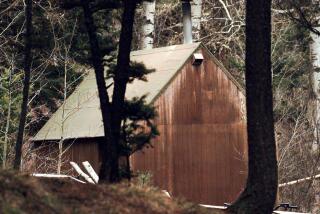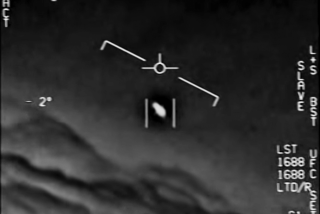Where the Unabomber Roamed?
- Share via
LINCOLN, Mont. — He might have eluded the FBI for 18 years. Shaking the U.S. Census Bureau was another matter. In 1990, Joe Youderian came knocking on the cabin door of the reclusive, unkempt man known around this town as “the hermit.” There was no answer. Youderian scratched out a note, promising to be back.
The next time the determined census-taker dropped by, Ted Kaczynski opened the door. He didn’t looked surprised. He didn’t look altogether happy, either. Nonetheless, he invited Youderian inside the single-room cabin. It was, folks in this remote little town now figure, the only time any one of them ever set foot inside Kaczynski’s cabin.
“It was a bachelor pad type of thing,” Youderian recalled Thursday in the beef jerky factory where he now works. “You could see he was not the sort of guy who would ever expect company. There were a couple of chairs. A table. No electricity. No running water. No telephone. We talked for a couple hours, mostly about his garden, what vegetables to plant, that sort of thing. I enjoyed it. He seemed like an intelligent, articulate guy. Somehow we got onto Vietnam. I remember he said, ‘I don’t think we should have been over there.’ That was it.
“He wasn’t a table-thumper or anything.”
No, he wasn’t a table-thumper. What he was, if the FBI has got the right man, was a bomb maker. He was, the feds believe, the Unabomber.
*
Until this week, the Unabomber had seemed an almost abstract concept, impersonal even to his victims. The hooded man in the one composite sketch looked a bit like anybody who ever flipped a hamburger or pumped a tank of gas. It was worthless. And the manifesto he said would rearrange the world and thus make his killing worthwhile was equally obtuse, a collection of generalities that seemed to give away nothing of the author. This vagueness made him seem even more spooky. It seemed the Unabomber could be anybody. He could live anywhere. He could strike anywhere.
The arrest stripped away the power of mystery. In a flash, the Unabomber was seen simply as this strange duck named Ted, who grew his own vegetables, barbecued coyotes--”I didn’t know it was against the law,” he is said to have told an inquiring game warden--and pedaled his bike about once a week through mud and snow to the lending library, where he liked to peruse the papers and science magazines and order special titles from the Helena branch, taking care to return each volume on time. The subject of the most intensive manhunt ever was not going to be tripped up by an overdue volume of “The Ancient Engineers.”
On Wednesday, after FBI agents appeared at the cabin and called out “Ted, we’d like to have a talk,” the people of Lincoln reacted like people universally react to such news. Kaczynski was, as one store clerk had said, as they always say, “the last person you would expect.” On Thursday, they were working a bit harder, straining to see previously missed pieces to the puzzle. Yes, there had been that “run-in” with loggers over a proposed cutting behind his cabin. And what about the time he lost his temper when the store didn’t stock some small gadget? And there were those bus trips into Helena, and the disappearances for several months at a time. . . .
*
Still, in the context of his environment, Kaczynski-as-Unabomber seemed a bit baffling. The Unabomber ranted about technology; Kaczynski lived without juice, in a part of the High Lonesome devoid of a Radio Shack or cellular phone service. The bomber lamented industrial plunder; Kaczynski’s cabin is nestled in the Blackfoot River Valley, below the peaks of the Scapegoat Wilderness. There is no prettier landscape. He shouldn’t have been bombing us; we should have been bombing him--out of jealousy.
Here was a guy free to curl up for hours in the cozy little community library. He’d retreat to the corners, read a newspaper, look all sorts of stuff up. In the back were old editions of Scientific American, including one with an article about crime quoted extensively in the Unabomber manifesto. There also are all sorts of address guides, including the Encyclopedia of Associations.
Flip to page 1473, and there it is: the Sacramento address for the California Forestry Assn. Its president, named Murray, was killed by a Unabomber mail bomb in 1995. The guidebook, however, does not mention Murray. It’s an out-of-date edition, listing as CFA president a man who left the association long before the bomb arrived. Interestingly, the Unabomber’s package was misaddressed to this departed president. At the time, investigators found this an odd slip for such a habitually precise killer. They couldn’t know then how deep into the woods the trail would lead.



